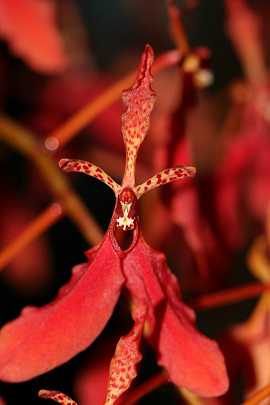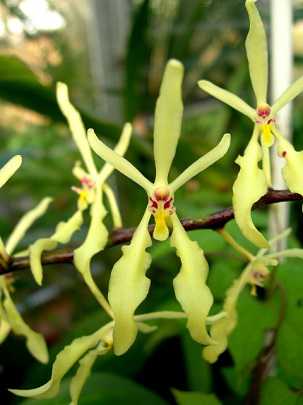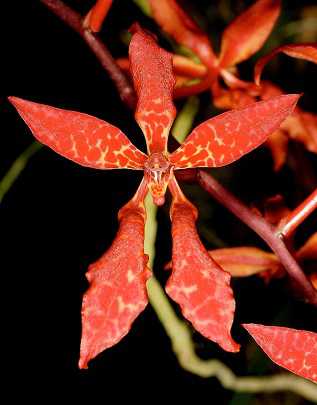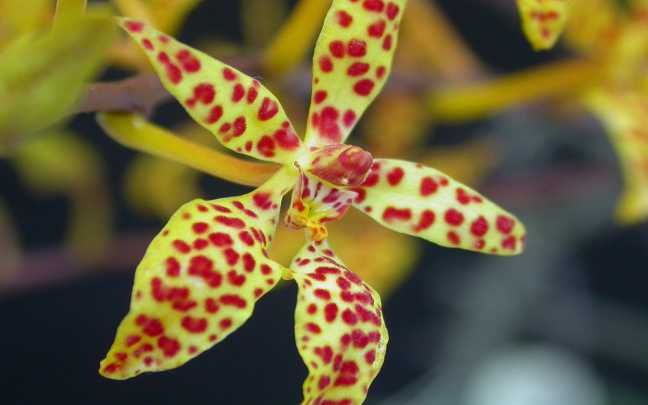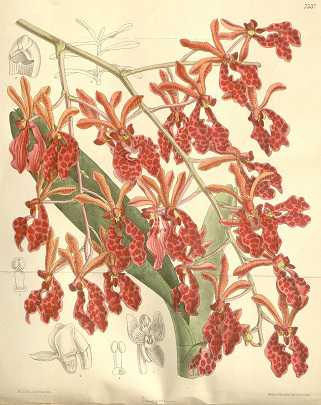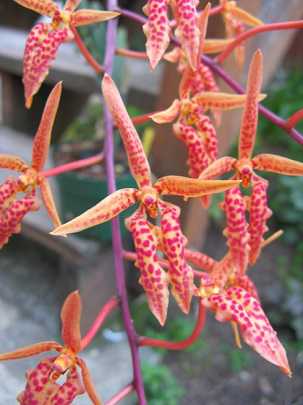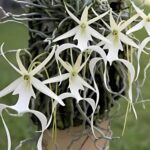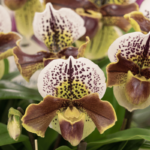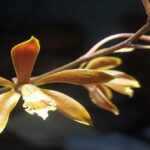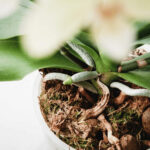Are you familiar with Renanthera orchids? Learn about their unique traits and cultivation methods.
Renanthera is a genus of orchids described in 1790 by missionary and botanist João Loureiro. The discovered species was Renanthera coccinea, also known as climbing orchid.
Today, this genus boasts 22 species found worldwide. If you want to learn how to cultivate these orchids and their key features, keep reading.
Learn How to Achieve Super Blooms on Your Orchids
🛑 If you love orchids and you're tired of not being able to make them bloom...
Then, know that thousands of beginner growers are achieving beautiful flowers on their orchids by following this method.
Click the button below to have beautiful orchids with show-worthy flowers every year. ⤵
Caring for Renanthera Orchids
Cultivating these orchids is similar to growing vandas. The ideal way to care for them is in a hanging basket.
They have long roots that grow best in free-hanging baskets.
Like vandas, they don’t require substrate.
NOTE: This species needs a support to attach, especially if planted on trees.
Here are the main factors for successful Renanthera cultivation.
Temperature
According to the AOS website, one of the leading orchid cultivation sites globally, the ideal temperature for these orchids should be above 15ºC (59°F).
There might be exceptions in some species, but this rule generally applies.
Light
For lighting, moderate exposure is suitable. The exception is Renanthera coccinea, which prefers much brighter light to flower (place it in direct sunlight).
If your plant isn’t blooming, check the lighting, as it might be the cause.
- If the leaves are darker than normal, it needs more sunlight.
- If they are burnt or yellower than usual, it’s receiving excessive sunlight.
Watering
Proper watering is crucial for orchid cultivation.
For Renanthera orchids, they prefer to alternate between dry and wet conditions.
Therefore, you need to constantly monitor your orchid’s substrate.
Soil
When caring for your Renanthera, it’s best to avoid using soil.
They prefer to be without soil.
However, if you choose to use substrate, ensure it provides good drainage for your orchid, such as:
- Fern fiber
- Coconut fiber
- Charcoal
- Sphagnum moss
Characteristics
Renanthera orchids are mainly found in Southeast Asia, in countries like:
- China;
- Himalayas;
- New Guinea;
- Other countries.
Most species in this genus are epiphytes, but there are also lithophytes.
They mostly have monopodial growth, spreading sideways.
These orchids, like phalaenopsis, lack pseudobulbs.
Pseudobulbs are responsible for storing water and nutrients.
Renanthera orchids are considered close relatives of vanda orchids. They come in very large species, some even exceeding 2 meters in height.
Hybrids
There are some famous hybrids between Renanthera and other species, such as:
- Renanthopsis: a cross between Renanthera and moth orchids.
- Renantanda: a cross between Renanthera and vandas.
Do You Want to Learn How To Keep Your Orchids Healthy And Ready to Bloom Every Year?
So, I prepared a complete guide, step by step and illustrated, that will show you:
• The secrets to getting beautiful flowers every year
• How to fight and identify pests and diseases on your orchids
• THE MAGIC SUBSTANCE for orchids and how to use it
• And much, much more.
The great news is that the manual is now available at a super discount!!
But beware, it's only for the first buyers.
Click on MORE INFORMATION below and discover the secrets to show-worthy flowers. 👇
Flowers
Renanthera flowers typically have vibrant colors, ranging from shades of:
- Red
- Yellow
- In some cases, purple
Exceptions exist; for example, Renanthera citrina has green flowers.
With proper care and the right species, you can achieve spectacular flowering with over 100 flowers.
This guide covers how to care for Renanthera orchids.
Now it’s your turn to share this article on your social media by clicking the icons below:

